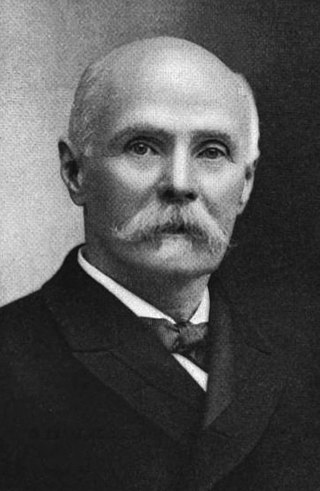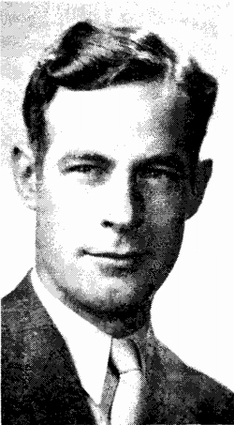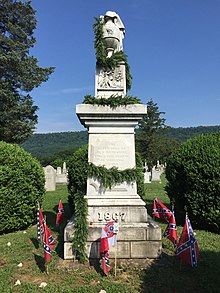
Hampshire County is a county in the U.S. state of West Virginia. As of the 2020 census, the population was 23,093. Its county seat is Romney, West Virginia's oldest town (1762). The county was created by the Virginia General Assembly in 1754, from parts of Frederick and Augusta Counties (Virginia) and is the state's oldest county. The county lies in both West Virginia's Eastern Panhandle and Potomac Highlands regions.

Romney is a town in and the county seat of Hampshire County, West Virginia, United States. The population was 1,722 at the 2020 census. It is part of the Winchester, Virginia metropolitan area. Established in 1762 along with Shepherdstown, they are the oldest towns in West Virginia.

Keyser is a city in and the county seat of Mineral County, West Virginia. It is part of the Cumberland, MD-WV Metropolitan Statistical Area. The population was 4,853 at the 2020 census.

The Confederate Memorial at Indian Mound Cemetery in Romney, West Virginia, commemorates residents of Hampshire County who died during the American Civil War while fighting for the Confederate States of America. It was sponsored by the Confederate Memorial Association, which formally dedicated the monument on September 26, 1867. The town of Romney has claimed that this is the first memorial structure erected to memorialize the Confederate dead in the United States and that the town performed the nation's first public decoration of Confederate graves on June 1, 1866.
The town of Romney, Virginia, traded hands between the Union Army and Confederate States Army no fewer than 10 times during the American Civil War, assuming the occupying force spent at least one night in the town. The story of the small town is emblematic of the many military campaigns that swept through western Virginia and, later, the new state of West Virginia.

Hanging Rocks are perpendicular cliffs rising nearly 300 feet (91 m) above the South Branch Potomac River in Hampshire County in the U.S. state of West Virginia. Hanging Rocks are located four miles (6 km) north of Romney at Wappocomo on West Virginia Route 28. Hanging Rocks has also been known throughout its history as Painted Rocks and Blue's Rocks. When distinguished from the "Lower Hanging Rocks" along the South Branch at Blues Beach to the north, Hanging Rocks is referred to as Upper Hanging Rocks.

Robert White was an American military officer, lawyer, and politician in the U.S. state of West Virginia. White served as Attorney General of West Virginia (1877–1881) and served two terms in the West Virginia House of Delegates, representing Ohio County in 1885 and 1891.
William Armstrong was an American lawyer, civil servant, politician, and businessperson. He represented Hampshire County in the Virginia House of Delegates from 1818 to 1820, and Virginia's 16th congressional district in the United States House of Representatives from 1825 to 1833.

Ridgedale is a 19th-century Greek Revival plantation house and farm on a plateau overlooking the South Branch Potomac River north of Romney, West Virginia, United States. The populated area adjacent to Washington Bottom Farm is known as Ridgedale. The farm is connected to West Virginia Route 28 via Washington Bottom Road.

Wappocomo is a late 18th-century Georgian mansion and farm overlooking the South Branch Potomac River north of Romney, Hampshire County, West Virginia, USA. It is located along Cumberland Road and the South Branch Valley Railroad.

John Rinehart Blue was an American military officer, educator, businessperson, and politician in the U.S. state of West Virginia. Blue was a Democratic member of the West Virginia House of Delegates representing Hampshire County, from 1953 until 1959.

Joshua Soule Zimmerman was an American lawyer, politician, and orchardist in the U.S. state of West Virginia. In the early years of the 20th century, Zimmerman served as the Prosecuting Attorney for Hampshire County and as a Democratic member of the West Virginia House of Delegates.

James Sloan Kuykendall was an American farmer, lawyer, and Democratic politician in the U.S. state of West Virginia. Kuykendall was twice elected as a member of the West Virginia House of Delegates representing Hampshire County. Kuykendall also served three terms as the mayor of Romney and later fulfilled the position of city attorney.

William Benjamin Cornwell was an American lawyer, businessperson, newspaper editor and publisher, and railroad and timber executive in the U.S. state of West Virginia. He was an older brother of writer and newspaper publisher Marshall S. Cornwell (1871–1898) and of West Virginia Governor John J. Cornwell (1867–1953).

Christian Streit White was an American military officer, lawyer, court clerk, pisciculturist, and politician in the U.S. states of Virginia and West Virginia.

Robert White was an American lawyer and Democratic politician in the U.S. state of West Virginia. White served four consecutive terms as the Prosecuting Attorney for Hampshire County, West Virginia (1912–1928), and served one term in the West Virginia Senate (1931–1935), representing the state's 15th Senate district in the 40th and 41st Sessions of the West Virginia Legislature. During the 1933 legislative year, White served as the floor leader for the Democratic Party members of the West Virginia Senate.
Isaac Parsons was an American planter, politician, and military officer in the U.S. state of Virginia. Parsons served as a Justice of the Peace of Hampshire County's District 3 from 1852 to 1853. He later served as a member of the Virginia House of Delegates representing Hampshire County from 1854 until 1857. Parsons was the grandson of Virginia House Delegate Isaac Parsons (1752–1796), the great-grandson of Colonial Virginia military officer William Foreman, and the grandfather of First Lady of West Virginia, Edna Brady Cornwell (1868–1958).
William C. Clayton was an American educator, lawyer, politician, and businessperson in the U.S. state of West Virginia. Clayton served in the West Virginia Senate representing the Eleventh Senatorial District of West Virginia from 1875 until 1879. He was twice principal of the Romney Classical Institute in Romney in 1853 and 1866.
James Dillon Armstrong was an American lawyer, politician, and jurist. Armstrong served in the Virginia Senate from 1855 to 1864, and as Judge of the 4th and 12th West Virginia Judicial Circuits from 1875 to 1892.







































